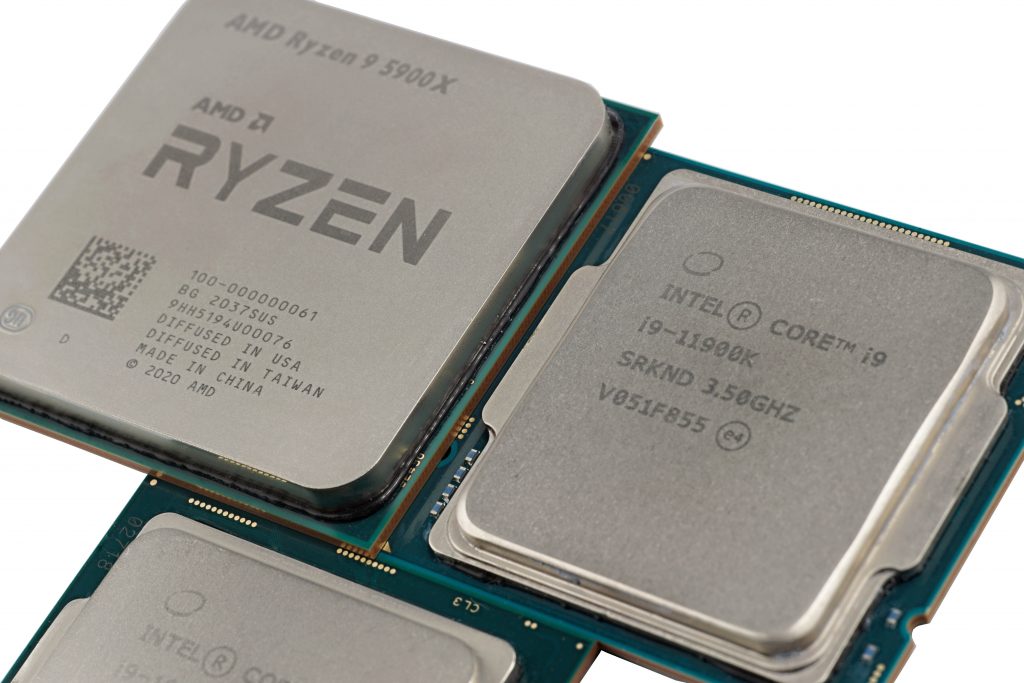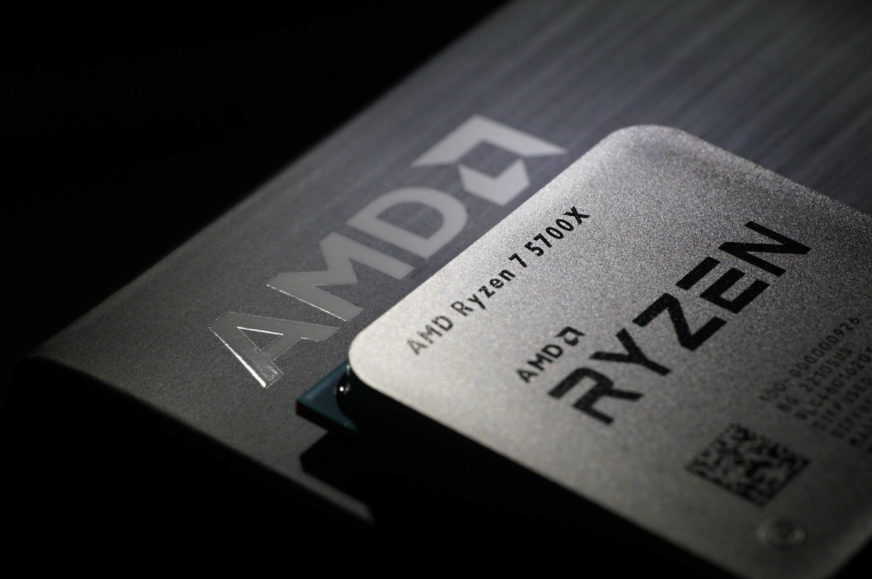What does the talk of undershipping really mean?
Last week, news stories have emerged that AMD is artificially inflating prices of its processors or GPUs by deliberately underselling the demand. This news has spread a lot. And yet, the report is almost certainly nonsense born out of misinterpretation (or misunderstanding of economics). There’s already been an official denial issued, but the story keeps spreading, so we feel it’s appropriate to address it a bit.
What’s this story about? The source of this report was the wording used directly by AMD representatives during the Q4 2022 earnings conference call. AMD said at that time that the company has been selling below normal during Q3, Q4 (and expects to keep doing so in Q1 2023 to a smaller degree) – the word “undershipping” was used, which you can see in the headlines that resulted.
“We have been undershipping the sell-through or consumption for the last two quarters […] we undershipped in Q3, we undershipped in Q4. We will undership, to a lesser extent, in Q1.”
The problem here is not the message itself, but the interpretation that were drawn from it. For example, PCGamer and PCWorld have taken it to mean that the sales were below normal level on purpose, i.e. that the company deliberately shipped fewer CPUs and possibly GPUs than customers asked for in order to artificially inflate prices. This was directly stated in PCGamer’s and PCWorld’s article (and others), but the original AMD announcement contains no such thing.
In reality (according to our interpretation, which nonetheless corresponds to what AMD has officially meant to say, as you will see later), the wording refers to the market situation. In both Q3 and Q4, the company had suffered significantly reduced sales, citing as the reason that the sudden arrival of the economic crisis and war in the world caused customers such as channel distributors and PC manufacturers to suddenly be left with much higher inventories than they can sell normally, due to having increased production before in the previous covid period. The only way to address this is to build new PCs from the processors they have already in stock, instead of buying new ones (from AMD, but the same impact is seen by Intel), and not making as many new PCs in order to first sell the old inventory.
This means that during the time when downstream vendors are reducing excess inventory, a component supplier like AMD sells significantly less than you would expect based on how many PCs are sold to consumers on the other side of the chain (or the processors themselves in the retail market – even that market can have its own excess inventory). This difference is gradually “digesting” the problem inventory in the warehouses. And this is exactly the difference that AMD was talking about when it mentioned that it was “undershipping”: the company is underselling compared to what the PC vendors end up selling to end customers. The company explicitly mentioned this, perhaps because PC sales statistics are available and financial analysts inevitably compare them to what AMD itself reports.
The idea was to avoid the impression that AMD’s position and market share might be weakening under pressure of its competitors. AMD’s statement was in response to a question from an analyst who felt that Intel and AMD were overly optimistic in modelling the TAM of the PC market they could compete for in the light of the decline in their sales that the companies have reported. So AMD wanted to clarify why it has seen the sales decline that it has and explain the discrepancy with future TAM outlook.
An official denial…
AMD has subsequently told PCWorld exactly this in an official statement, which was added to the webiste’s article:
Drew Prairie, AMD’s VP of communications, reached out with the following clarification:“ We are shipping below consumption because there is too much inventory in the channel and that partners want to carry lower levels of inventory based on the demand they are seeing and their expectations for their business… the idea we are doing this to keep prices“ elevated” isn’t accurate. Our client ASP was flat year over year, and that is due to mix of CPUs shipped.” [By the last addition, the company apparently means that more expensive models like the Ryzen 7 5800X3D or the new Ryzen 7000s were more represented in the mix, which offset the price drop in other models sold.]
This article originally published with the headline“ AMD is‘ undershipping’ chips to keep CPU, GPU prices elevated” but it has been updated to reflect AMD’s clarification.
The key takeaway here is that the vendors have actually been shipped as many processors as they wanted, and AMD didn’t actively throttle their supply. The reason for the reduction in sales was purely on the part of the vendors, who reduced their purchases themselves.
Sadly, nobody seem to have bothered much with this clarification. PCWorld published the text from AMD and changed the title of the story a bit, but apparently they didn’t want to sacrifice the basic idea, so they kept in wording that suggests deliberate market manipulation by AMD (which we disagree with). The misinterpretation was left completely unchanged in the stories published by PCGamer, TechPowerUp or TechSpot. VideoCardz simply deleted their article instead of amending it. With this, the misinterpretation attributing unfair intentions to the company will probably stick and the subsequent retraction and clarification will probably not reach most readers of the original articles. Similar to the (unintended) hoax that AMD’s driver update caused the destruction of dozens of Radeon RX 6800 XT and 6900 XT cards in Germany (the reality was that these cards apparently came from a cryptocurrency miner who apparently damaged them through poor storage, mining, or unprofessional cleaning before selling them to unsuspecting victims).
Artificial price inflating theory does not fit the current state of the market
Is it appropriate to accept the explanation that AMD has given on the matter, as opposed to the interpretation that PCWorld came up with at the beginning? We think so and our position is that PCWordand others were actually wrong in their interpretation. In this case, it seems to us virtually inconceivable that there could be any deliberate restriction of supply, either to increase prices (so-called price-fixing) or that AMD wanted to dictate what stock levels should their partners keep (which is what the edited version of the PCWorld article sort of evokes). In our view, AMD’s statement is correct in asserting that this was not an intention, but simply an outside reality created by demand on the part of customers.
Sales of Ryzen processors were down a staggering 51% year-over-year in Q4 2022 (the sales fell to less than half the level of Q4 2021), and Radeon GPUs were also down an unspecified percentage. In a situation like this, you can’t expect a company to be looking to further deteriorate its own sales.
Hypothetical efforts to inflate prices through artificial scarcity of product require adequate market conditions. And that is that there needs to be a high demand for the product while it’s not possible or practical for other competitors to substitute the scarce products with their own product. Companies had opportunity to try this practice during the cryptocurrency bubble, for example. It is not entirely clear whether they actually did however, as we were simultaneously going through a global chip undersupply situation at the time with shortage of production capacity and components availability. That actually makes the scenario that AMD and Nvidia could produce more GPUs at the time but decided to cut back production to milk the demand not as likely as one would think.

In contrast, the market demand is significantly reduced in today’s macroeconomic climate of crisis and war. Not only AMD, but also Intel is suffering from the fact that there are not enough computers being sold, and manufacturers have high inventories that they have to get rid of first. Moreover, AMD is at a disadvantage here as the smaller of the two players, because Intel has better leverage over the OEM market customers, and indeed, it is rumored that Intel is currently using their various leverages to try to convince PC manufacturers into buy more processors from them, which must logically come at AMD’s expense. It’s a question of whether to believe it – although, it is claimed by the firm Bernstein Research with the rather experienced analyst Stacy Rasgon.
If AMD tried to pretend that it didn’t have enough processors and tried to pressure the customers to pay more for them in this situation, they probably wouldn’t stand a chance. In fact, Intel craves the opportunity to take market share from AMD and reduce its own problem of poor demand and deteriorating sales a bit. Thus, such a move from AMD would have no effect on price, as every chip that AMD refused to deliver would be promptly substituted by Intel’s sale. This would be exactly the factor of competitor jumping in and foiling the scheme when a company attempts to artificially starve the market, meaning that purported attempt to fix prices from AMD would be doomed to fail and hence the company most likely knows better than to try (if not for other reasons). Simply put – when demand is weak, customers are in control and it is very difficult to dictate high prices to them.
Source: PCWorld, AMD (via Insider Monkey)
English translation and edit by Jozef Dudáš
⠀












The truth is just too boring for the general audience.
The truth? 🤦♂️ 🤦♂️ 🤦♂️ This whole article hinges on the interpretation of one word and just to justify how everyone else was wrong to cover up what amd is doing. Give me a break here for God sake. Amd, just like nvidia, is not your friend.
Ans you are going to peddle this bs prapoganda that amd is smaller than intel in the gpu market because Intel can leverage oem players? Really? I mean God damn really?
This whole peice is a amd shill peice.
“Amd, just like nvidia, is not your friend.”
That’s a fine argument.
“This whole article hinges on the interpretation of one word and just to justify how everyone else was wrong to cover up what amd is doing.”
However, it’s the other articles that “hinge on interpretation”. As you can see, we tried to present the context of that word (or more precisely sentence) too and that supports our interpretation.
You can see it as “AMD defense”, but that is no reason to stay away from debunking misconceptions and erroneous reports.
“X company is not your friend.” is a quote from tech-tube channels. We all know that they don’t run a charity but speaking of the GPU market, AMD simply doesn’t have the position to manipulate the supply, especially in the current economic conditions, other than the standard release of the lower-tier products much later, to make the smart buyers think twice.
Many people don’t buy a GPU, they buy an NVIDIA. The reasoning is sometimes very logical, sometimes completely not so. The general outlook is that NVIDIA runs almost a monopoly and is the only company able to manipulate the supply. AMD is undershipping because the buyers don’t want to buy their GPUs.